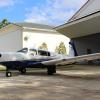So I want a bravo, how to pick a good one.
-
Members Online
- Mooney in Oz
- Jayrod
- oelbrenner
- MattD89
- PaulM
- rickseeman
- Rwsavory
- LANCECASPER
- AMG880
- MattCW
- Stubby
- Planegary
- thomas1142
- neilpilot
- jcovington
- Dwb62
- DXB
- N201MKTurbo
- Rsmithref
- Joseph Long
- ta2too
- 802flyer
- planedoc
- Utah20Gflyer
- TuomoMooneyFlying
- BartReed
- midlifeflyer
- PhateX1337
- Stanton R
- Danb
- warbingtonmasonry
- TCW3
- Johnny_SA
- eman1200
- onautopilot


Recommended Posts
Join the conversation
You can post now and register later. If you have an account, sign in now to post with your account.